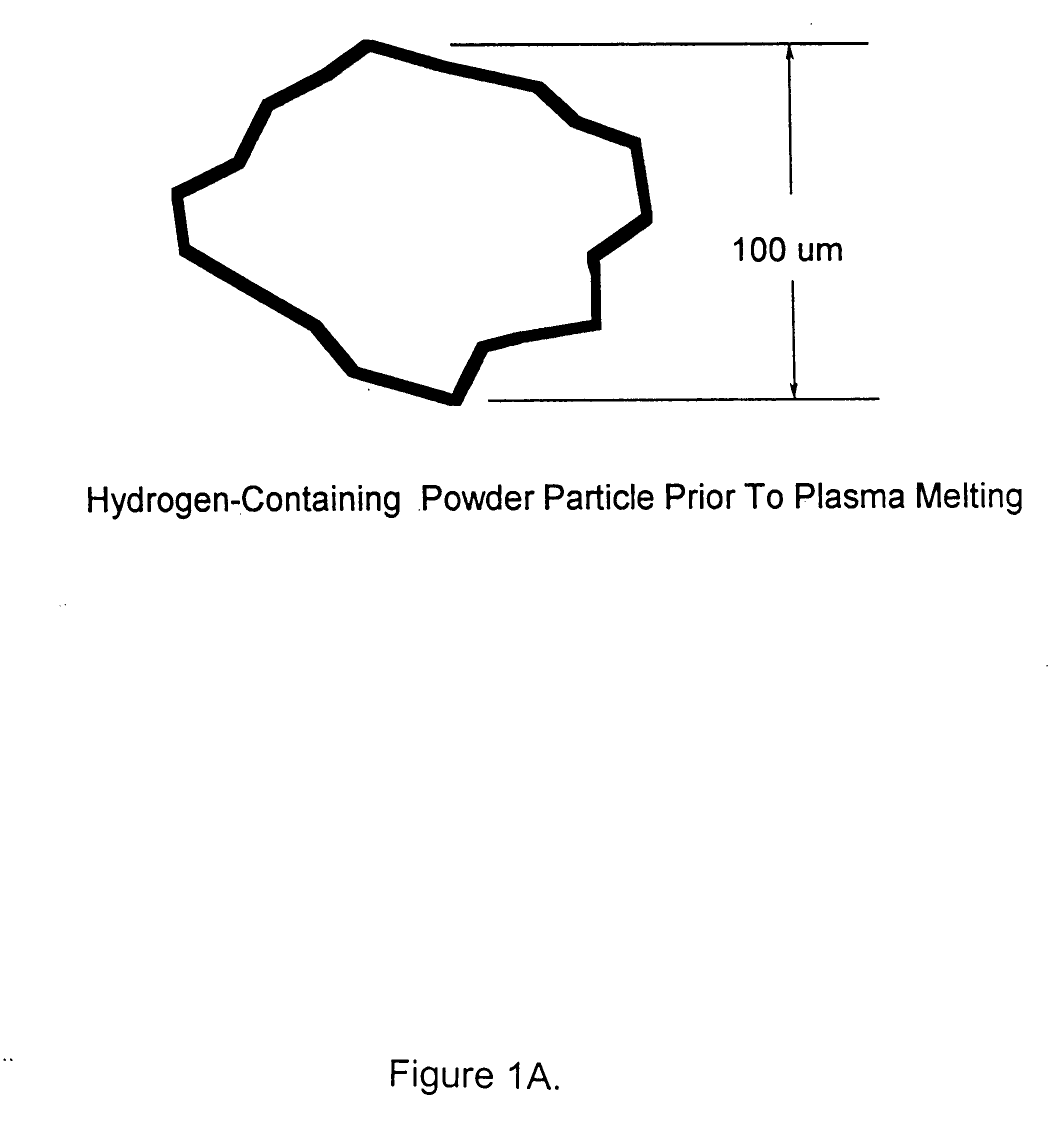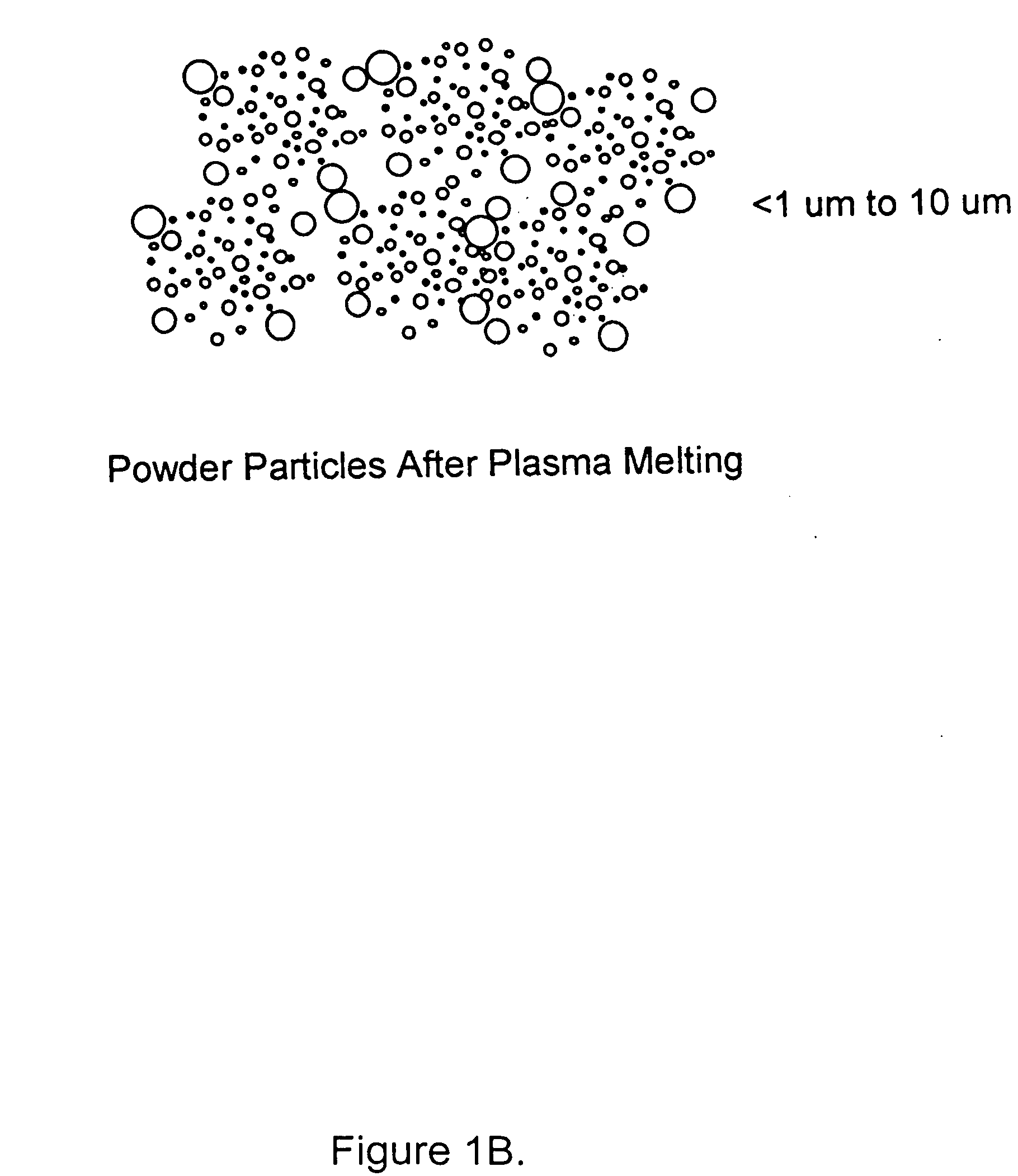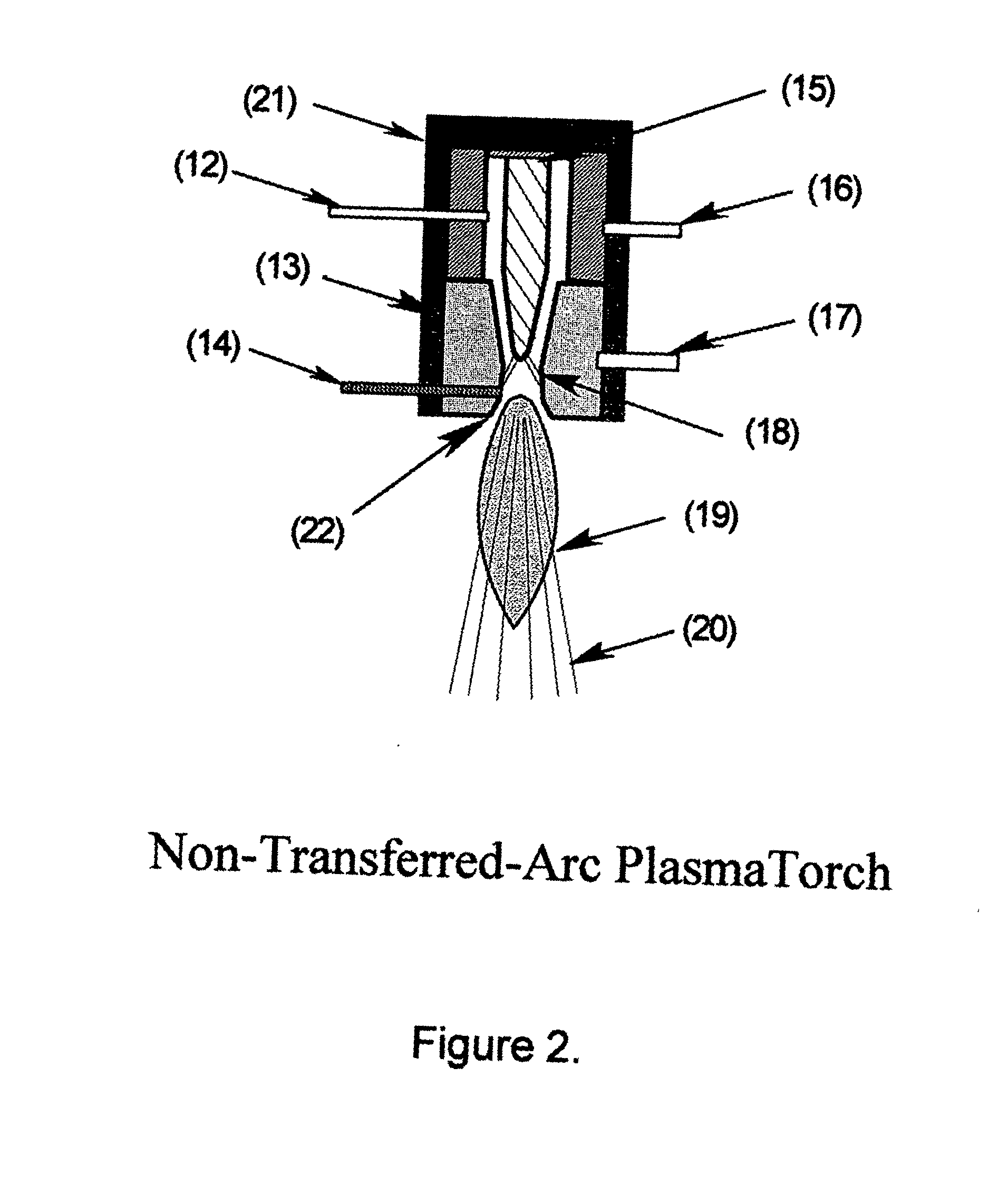Method and apparatus for manufacturing fine powders
a technology of fine powder and manufacturing method, which is applied in the field of fine powder making, can solve the problems of significant effect of entrapped gas on the size of the resultant fine powder, and achieve the effects of reducing the utility of raw materials, reducing the amount of entrapped gas, and reducing the amount of fine powder
- Summary
- Abstract
- Description
- Claims
- Application Information
AI Technical Summary
Benefits of technology
Problems solved by technology
Method used
Image
Examples
examples one
, two, and four, described below, used coarse feed powders or particles classified to greater than 45 micrometers but less than −75 micrometers. Example 3 used feed powder that was all under 45 micrometers
While the examples are specific in the details of the procedures, there are a wide range of conditions e.g., type of matter, type of gas, gas percentage content, particle size, particle feed / flow rates, current amperage / voltage, etc.) that would be suitable for producing fine powder for specific purposes using the invention. In all of the examples, the fine powder product was spherical because of the processing conditions. The described examples are not meant to limit the combinations of process conditions that can be used to produce fine powder according to the invention.
example one
The hydrogen-enriched titanium was loaded into the powder feed hopper 1 of the system 34 as described above and shown in FIG. 4. The entire system 34 was then purged for one hour with pure argon. Subsequently, the hydrogen-enriched titanium coarse feed powder was fed through the hot plasma flame 19 that is more clearly seen in FIG. 2. Argon gas was fed to the powder feed hopper 1 at a rate of 10 cubic feet / hour to assist in feeding the coarse powder 2 to the arc plasma 3. The feed rate of gas-enriched coarse particles 2 was 4 pounds / hour. The plasma current was 600 amps at 40 volts. The plasma gas was pure argon at a flow rate of 50 cubic feet / minute. Argon gas was fed to the reaction chamber 7 at a rate of 100 cubic feet / hour to protect the hot fine spherical powder particles and to sweep the sight glass of attached particles. A flow of argon to the collection pot 9 attached to the bottom of the reaction chamber 7 was maintained at 20 cubic feet / hour for further protection of the ...
example two
The process or method of Example One was followed and applied to the same type of coarse feed powder 2, except that the electrical power to the plasma torch was raised to 700 amps to increase the flame temperature. The fine spherical powder 20 which was produced in this case was observed to contain a greater number of significantly smaller particles then the fine spherical powder produced in Example One. Almost all the particles 20 appeared to be under 10 micrometers, and most were under 5 micrometers. The powder 20 was passivated by coating it with mineral oil in a 4% ratio by weight, as described in Example One.
PUM
| Property | Measurement | Unit |
|---|---|---|
| diameter | aaaaa | aaaaa |
| diameter | aaaaa | aaaaa |
| diameter | aaaaa | aaaaa |
Abstract
Description
Claims
Application Information
 Login to View More
Login to View More - R&D
- Intellectual Property
- Life Sciences
- Materials
- Tech Scout
- Unparalleled Data Quality
- Higher Quality Content
- 60% Fewer Hallucinations
Browse by: Latest US Patents, China's latest patents, Technical Efficacy Thesaurus, Application Domain, Technology Topic, Popular Technical Reports.
© 2025 PatSnap. All rights reserved.Legal|Privacy policy|Modern Slavery Act Transparency Statement|Sitemap|About US| Contact US: help@patsnap.com



